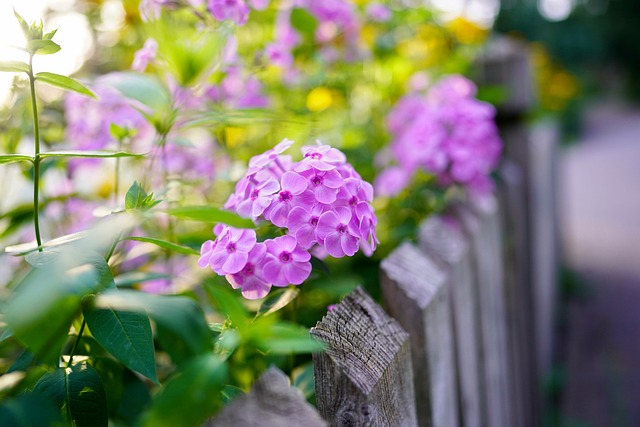Large properties present unique challenges when it comes to fencing, demanding solutions that balance aesthetics, functionality, and affordability. This article guides homeowners through the process of selecting cost-effective fencing solutions tailored to expansive landscapes. We explore traditional options versus innovative alternatives, highlighting sustainable materials known for their durability. Creative design strategies for large spaces are presented, along with installation tips ensuring longevity. Additionally, maintenance advice is offered to keep your cost-effective fence in top condition.
- Understanding Large Property Fencing Needs
- Traditional Fencing vs Cost-Effective Options
- Sustainable and Durable Materials
- Creative Designs for Large Spaces
- Installation Tips for Longevity
- Maintaining Your Cost-Effective Fence
Understanding Large Property Fencing Needs
Fencing a large property presents unique challenges compared to smaller plots. The sheer size demands durable, long-lasting materials that can withstand harsh weather conditions and potential damage from wildlife or passing vehicles. Security is also a primary concern; homeowners seek fences that offer privacy while deterring intruders.
Functionality is key; the fence should define boundaries clearly, be easy to maintain, and integrate seamlessly with the natural landscape. Cost-effectiveness is another critical factor, as large properties often have limited budgets for such projects. Balancing these requirements calls for thoughtful planning and the selection of suitable materials and designs that offer both style and value.
Traditional Fencing vs Cost-Effective Options
Traditional fencing methods often involve heavy expenses due to material costs and labor. This includes materials like wood, metal, or vinyl, which can be costly, especially for large properties requiring extensive coverage. The installation process also demands skilled laborers, adding significantly to the overall price tag.
Cost-effective fencing solutions offer a more budget-friendly approach. These options include innovative products such as vinyl composite fencing, chain link fences, or even natural barriers like hedges and trees. Not only are these materials generally less expensive, but they also require minimal maintenance, further reducing long-term costs. Additionally, some modern designs provide excellent security without breaking the bank, making them ideal for large properties on a tight budget.
Sustainable and Durable Materials
When considering fencing solutions for large properties, opting for sustainable and durable materials can be an environmentally conscious and long-lasting decision. Modern advancements in material science have led to innovative options that are not only robust but also eco-friendly. For instance, recycled plastic and composite materials are gaining popularity due to their longevity and reduced environmental impact compared to traditional wooden or metal fences. These materials are often designed to resist rot, rust, and damage from pests, ensuring they maintain their integrity over time.
Moreover, sustainable fencing options often incorporate natural elements that blend seamlessly with the surrounding landscape. Bamboo, for example, is a fast-growing grass that can be transformed into robust fence posts or panels, offering both strength and an aesthetic appeal. Other organic materials like wood from certified sustainable sources can also contribute to a property’s eco-friendliness while providing effective boundary demarcation.
Creative Designs for Large Spaces
When it comes to fencing large properties, creative designs can transform an ordinary barrier into a visually appealing feature that enhances the overall landscape. For expansive spaces, consider custom-designed metal or wood panels that incorporate unique patterns and shapes, such as arcing lines or meandering curves, to add depth and interest. These artistic elements can blend seamlessly with natural terrain, creating a harmonious outdoor aesthetic.
Moreover, for a truly remarkable effect, think outside the box with living fences. Planting dense hedges or rows of tall shrubs along the property line not only provides privacy but also creates a dynamic, organic boundary that can be shaped and pruned to suit various designs. This natural approach not only reduces maintenance costs but also offers an ever-changing visual experience as the plants grow and mature.
Installation Tips for Longevity
When installing fencing for large properties, there are several tips to ensure longevity and durability. First, plan your layout carefully, considering the terrain and any potential obstacles. Proper planning can prevent future issues and make installation smoother. Use high-quality materials that are suitable for outdoor conditions; this includes robust posts, sturdy rails, and weather-resistant panels.
Regular maintenance is key to keeping your fence in top condition. Check for loose connections, treat wooden components with preservatives, and ensure proper drainage around the base of the fence to prevent water damage. Additionally, trim any overhanging branches from nearby trees or shrubs to avoid physical stress on the fence during storms or high winds.
Maintaining Your Cost-Effective Fence
Maintaining your cost-effective fence is an essential part of ensuring its longevity and keeping your property secure. Regular cleaning and inspection are key; remove any debris, leaves, or vines that may accumulate on top, as this can affect the fence’s stability and appearance. Check for loose panels or posts, and make repairs promptly to prevent damage from weather conditions or wildlife.
Painting or sealing your fence periodically is another great way to protect it from the elements. This simple step can significantly extend the life of your barrier, keeping it looking as good as new. Additionally, keep an eye out for any signs of wear and tear, such as broken hinges or damaged pickets, and replace them promptly to maintain the fence’s overall integrity.
